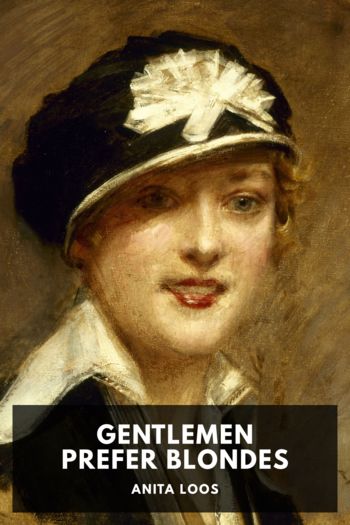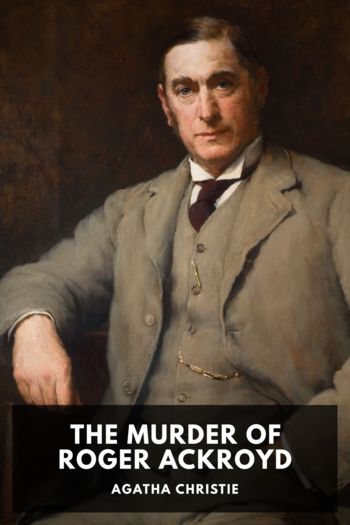Genre Other. Page - 270

Description
Xavier de Maistre lived mostly as a military man, fighting in France and Russia around the turn of the 19th century. In 1790 a duel he participated in led him to be put under arrest in Turin; during his confinement in a tiny chamber, he wrote his most famous work, “A Journey Round My Room.”
“Journey” is a short story written as a parody of the grand travelogues popular at the time. He frames his six weeks’ confinement as a long journey across the unknown land of his room, visiting the furniture, the paintings on the wall, and even venturing to the north side. De Maistre didn’t hold the work in very high regard, but after his brother had it published in 1794 it became a fast success, eventually calling for a sequel (“A Night Journey Round My Room”), and warranting allusions in fiction by writers like D. H. Lawrence, Wilkie Collins, W. Somerset Maugham, and Jorge Luis Borges.
The rest of his literary corpus is modest, and consists entirely of short works. “The Leper of the City of Aosta” is a philosophical dialogue on the struggles of a leper whose days are seemingly filled with unending sorrow; “The Prisoners of the Caucasus” is the fictional narrative of a captured general and his faithful servant, set against a rich background of Cossack factions in the Caucasus of Imperial Russia reminiscent of Tolstoy’s Hadji Murád; and “The Young Siberian” is the true story of Prascovia Lopouloff, a poor Russian girl who sets out on a journey to secure an imperial pardon for her exiled father.
De Maistre never set out to have a literary career, but his carefully-considered output made him famous across the continent.

Description
Gil Blas isn’t the first picaresque novel, but it’s one of the genre’s most famous examples; it’s a novel that at one point in history was on the bookshelf of every good reader, and it has been featured in allusions across literature for centuries after its publication between 1715 and 1735.
Gil Blas is the name of a Spanish boy born to a poor stablehand and a chambermaid. He’s educated by his uncle before leaving to attend a university, but on the way his journey is interrupted by a band of robbers, and his picaresque adventures begin. Blas embarks on a series of jobs, challenges, advances, setbacks, romances, and fights on his path through life, ultimately continuing to rise in station thanks to his affability and quick wit. On his way he encounters many different kinds of people, both honest and dishonest, as well as many different social classes. Blas’ series of breezy, episodic adventures give Lesage an opportunity to satirize every stratum of society, from the poor, to doctors, the clergy, writers and playwrights, the rich, and even royalty.
Though Lesage wrote in French, Gil Blas is ultimately a Spanish novel in nature: Blas himself is Spanish, and his adventures take place in Spain. The details Lesage wrote into the novel were so accurate that some accused him of lifting from earlier works, like Marcos de Obregón by Vicente Espinel; others even accuse it of being written by someone else, arguing that no Frenchman could know so much detail about Spanish life and society.
Despite any controversy, Gil Blas was translated into English by Tobias Smollett in 1748. His translation was so complete that it became the standard translation up to the modern day.

Description
The Power of Darkness is a five-act drama that follows the downfall of the peasants Anísya and Nikíta as they succumb to a series of sordid temptations, from adultery and drunkenness to outright murder. Written in 1886 but suppressed by censors until 1902, the play is a realist portrayal of some of the darkest elements of Russian peasant life. Similar to some other late Tolstoy works, like Resurrection, the play’s psychological exploration of human depravity is accompanied by a sharp social critique of the Russian Empire and its role in perpetuating poverty and ignorance among its lowest and most marginalized classes.

Description
Lorelei, a young woman living in the early 1920s, decides to keep a diary after receiving a blank journal from a “gentleman friend.” Lorelei has an apartment in New York paid for by a Chicago businessman named Gus Eisman. When he’s in town, Mr. Eisman spends his time “educating” Lorelei by going out to dinner, taking in shows, and then escorting her to her apartment to “talk about the topics of the day until quite late.” When he isn’t in town, Lorelei does much the same with the other men she has charmed.
Joined by her best friend Dorothy, Lorelei embarks on a journey to Europe in order to meet Mr. Eisman and continue her education. As the diary unfolds, we learn more about Lorelei’s past and her cynical, rather mercenary approach towards romance.
Originally published as a series of sketches known as “the Lorelei stories” in Harper’s Bazaar, Gentlemen Prefer Blondes was published as a novel in 1925. Despite lukewarm initial reviews, it quickly became a success, becoming the second-best seller of 1926. Since then it has been adapted several times, most famously as the 1953 film starring Marilyn Monroe. Edith Wharton called it “the great American novel,” and it has been praised by numerous other authors including James Joyce and F. Scott Fitzgerald.

Description
In the year 2129, a doglike alien race asks the scientists Arcot, Wade and, Morey to assist them with defending their solar system from an enemy force. Their journey takes them to other solar systems across the galaxy as they build battle spacecraft out of pure matter using only their minds.
Invaders from the Infinite is the third and final installment in the Arcot, Morey, and Wade trilogy. It was originally published in April 1932 in Amazing Stories.

Description
The Skylark of Space is said to be the seminal space opera. Dr. Seaton accidentally discovers a source of energy which could be used to travel to other star systems, but when he tries to show others, it fails to work. Most of his colleagues ridicule him, and he quits his career to focus on trying to refine the process. Meanwhile Dr. DuQuesne realizes the truth, and is willing to do anything to have that power.
Both scientists refine the process well enough to build a spaceship and visit other planets, but who will these new civilizations side with?
This version of The Skylark of Space was originally published in three parts during 1928 Amazing Stories. The novelization, which was published later, differs significantly.

Description
The McLaughlins are prominent members of a settlement of Scottish immigrants who emigrated to the still-wild prairies of Iowa. As the story begins, their eldest son, Wully, returns to the family farm after serving in the Union Army during the Civil War. But much has changed in his absence: the girl who once returned his love, Chirstie, now appears cold, fearful, and traumatized, and won’t meet his eye. Wully seeks to discover what happened to her during his absence, and what he can do to set things right, without having Chirstie lose her standing in their tight-knit and very religious Presbyterian community.
Margaret Wilson grew up on a farm in the small town of Traer, and her understanding of the land and its people infuses this, her first novel. The Able McLaughlins won the Harper Novel Prize on publication and then the Pulitzer Prize in 1924.

Description
In this, his first novel, P. G. Wodehouse offers a glimpse into the insular world of an English public school scandalized by a recent burglary of its prized sports trophies (“pots”) from its cricket pavilion. At first an overzealous master unjustly accuses one of the schoolboys, who happens to be in need of cash to pay a gambling debt owed to his brother. But, thanks to a Scotland Yard inspector brought in especially for the case, the boy is cleared and his promising career among the elite is left intact.
Along the way, Wodehouse gives snapshots of the everyday lives of various boys: from dealing with the idiosyncrasies of fellow students, to collecting birds’ eggs and sneaking a smoke in the nearby woods while avoiding capture by gamekeepers, to cranking out an underground magazine to raise needed funds. Through it all, the boys, along with their headmaster, handle things with wit and aplomb. Consistent with a worldview in which a man “should be before anything else a sportsman,” sporting contests figure prominently: a boy rises from the canvas to score an unexpected knockout, and another graciously accepts his last-second defeat at the finish line.

Description
Indiscretions of Archie is a comic novel adapted from a set of short stories serialized in the Strand magazine between March 1920 and February 1921 in the United Kingdom and between May 1920 and February 1921 in Cosmopolitan in the United States. The novel was first published in the United Kingdom on February 14, 1921 by Herbert Jenkins and in the United States on July 15, 1921 by George H. Doran.
The eponymous Archie is Archibald Moffam, a gaffe-prone but affable Englishman who has found himself living in New York City after the end of the First World War, in which he had served with distinction. After a whirlwind romance Archie marries Lucille, the daughter of wealthy hotel owner and art collector Daniel Brewster. Many of the ensuing events revolve around Archie’s attempts to win favor with his new father-in-law.

Description
Hercule Poirot has retired to the English village of King’s Abbot, determined to use his little grey cells in the growing of vegetable marrows. But when Roger Ackroyd, a local businessman and former acquaintance of Poirot’s, is murdered, the man’s niece begs Poirot to investigate in order to clear her fiancé. With Hastings having married and moved to Argentina, Poirot enlists the local doctor to be his assistant and scribe, and the two of them sift through clues to try to discern the ones that will lead them to the killer.
Agatha Christie’s two previous Poirot novels had been generally well-received, but The Murder of Roger Ackroyd made her a household name. Consistently ranked among Christie’s best works, in 2013 it was voted as the best crime novel ever written by the 600-member Crime Writers’ Association of the United Kingdom.